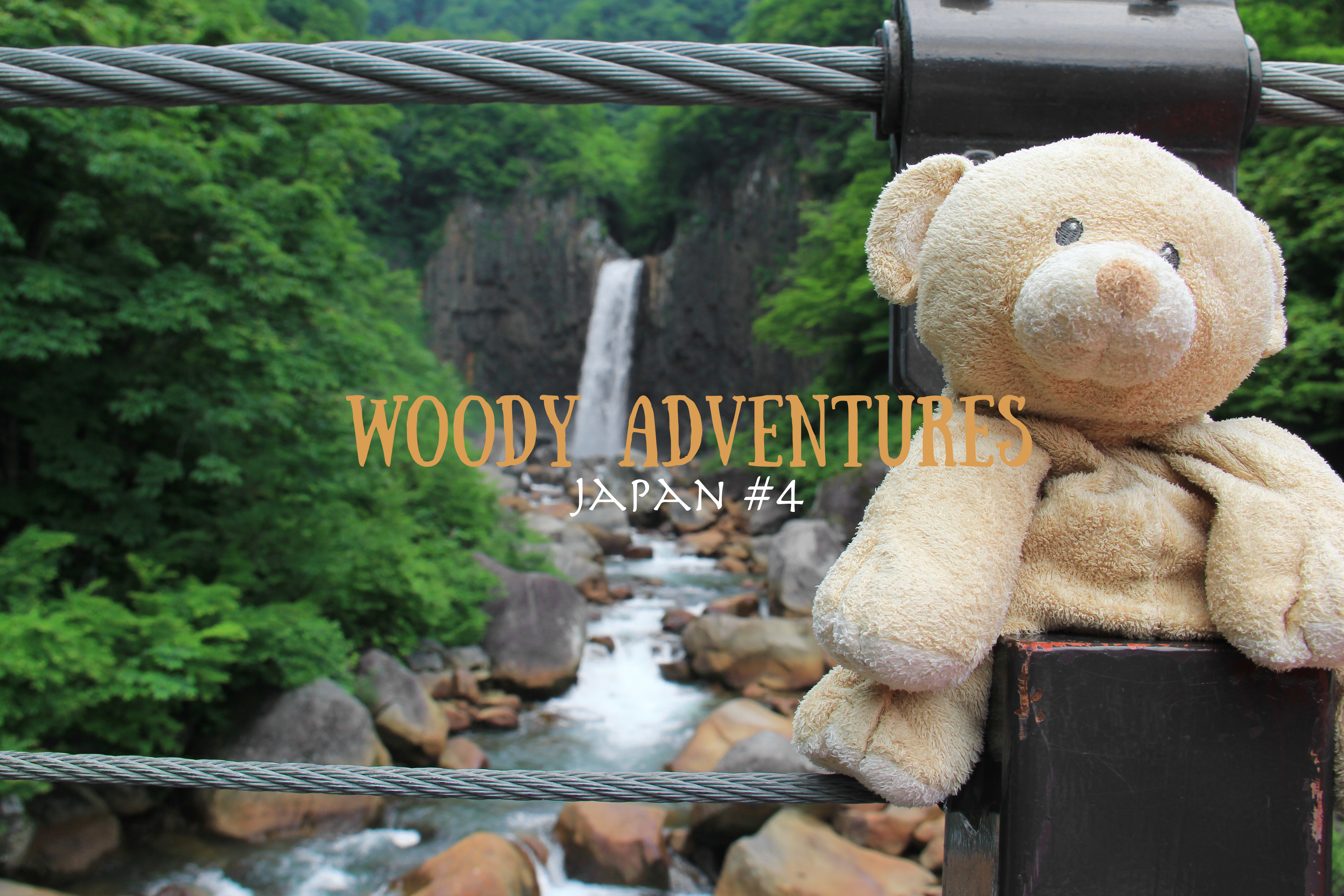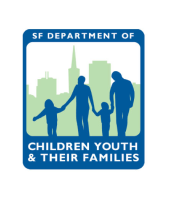This is the end of Woody’s adventures in Japan; this post covers our trip from Tottori all the back to Tokyo.

Tottori
Tottori Sand Dunes
When my uncle said there was a desert in Japan, I almost believed him. But then I realized the “desert” he mentioned was the Tottori Sand Dunes, which form a large dune system that covers over eighteen square miles. The dunes themselves are as tall as one hundred-sixty feet! (Some teenagers brought snowboards to slide down the slopes.) We climbed up one of the shorter dunes to get to the shore, but then we had to climb back over a taller dune, which made me realize that trudging uphill through sand was extremely tiring. But in the end, the view was worth the hike and afterwards, we rewarded ourselves with delicious sashimi!

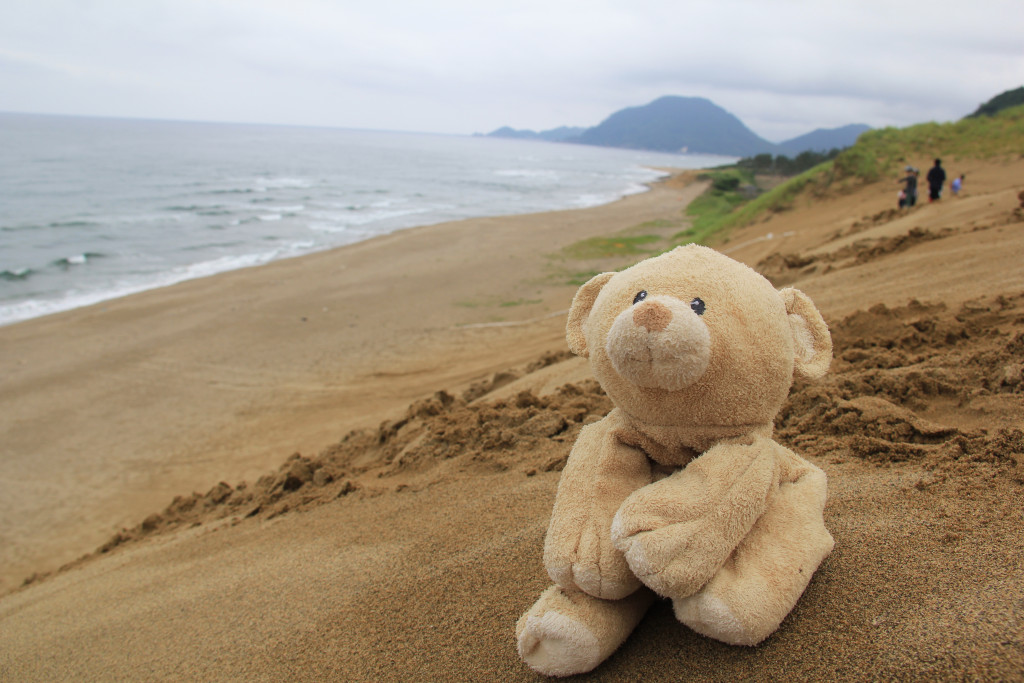
Kaga
Daikannon Kagadera Temple
Originally, we didn’t plan on stopping at this particular temple. But as we were passing through Kaga, we spotted the large Kannon (also known as Guanyin in Chinese culture) statue from far away and decided to stop by– and it was one of the best destinations we visited in Japan. The temple itself was empty except for one employee who gave us complimentary omamori, or good luck charms sold in Japanese shrines and temples. Up close, the Kannon statue towered over us. The statue stands at two hundred-forty feet, which is taller than the giant Buddha statue we saw in Hong Kong. Normally, you can walk inside the statue, but it was closed for construction during the off season. While the statue was amazing, the temple itself is a hidden gem: on the outside the buildings are dilapidated and run-down, but on the inside there are tons of interesting exhibits and displays! One room had hundreds of golden statues, while another room had a giant golden bell that hung over a small pool of water. Woody would definitely recommend visiting this temple; the entrance fee was super cheap (I’m pretty sure it only five hundred yen) and so worth it.
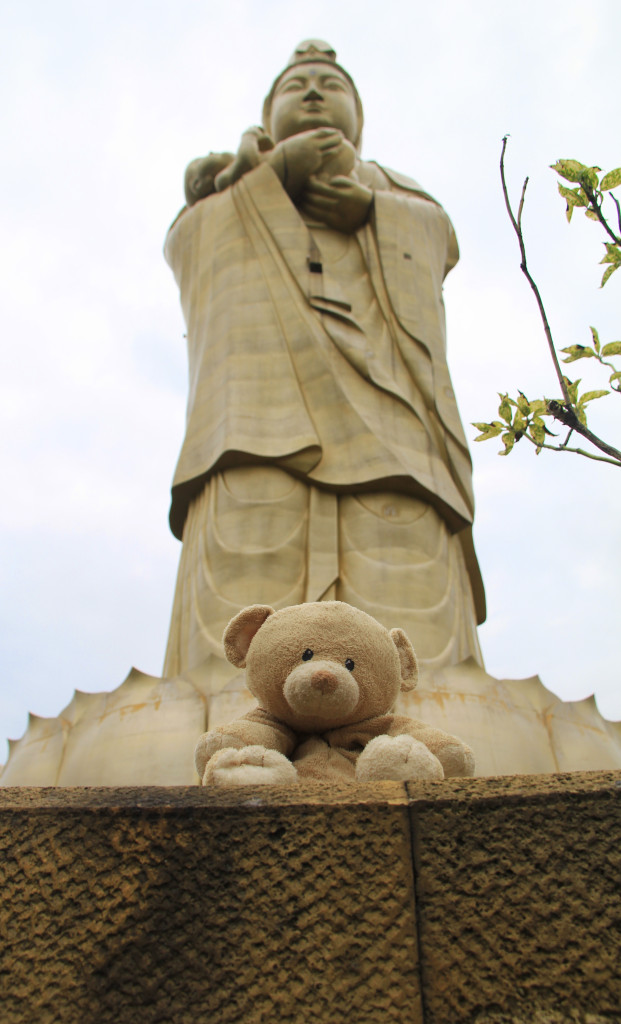
Kanazawa
Kanazawa Station
We didn’t really do much in Kanazawa except visit Kanazawa Station and eat lunch. The Kanazawa Train Station is known for its beautiful architecture and the big arch in front. There is also a water clock that spells out the time. Nearby, we tried omurice, which is basically an omelet over rice and covered in delicious sauce.

Shirakawa-go
Historic Village of Shirakawa-go
After Kanazawa, we stopped at the small traditional village of Shirakawa-go. The houses are built in the architectural style known as gassho-zukuri, characterized by the thatched, slanted roofs. When we went it was raining cats and dogs, but it added to the beauty of the village and made the green of the small rice paddies and overgrown gardens seem greener. Weirdly enough, there were rainbow trout swimming inside a man-made aqueduct along the road.

Myoko
Food
The last city we stayed in Japan was Myoko. On the first night we ate at a nearby ramen shop where we tried ramen with ago-based broth (ago is flying fish). The next night we enjoyed cheap sushi; the restaurant had tablets you could order from, and the food was sent to the table by a small bullet train– kind of like sushi boats, but on trains!

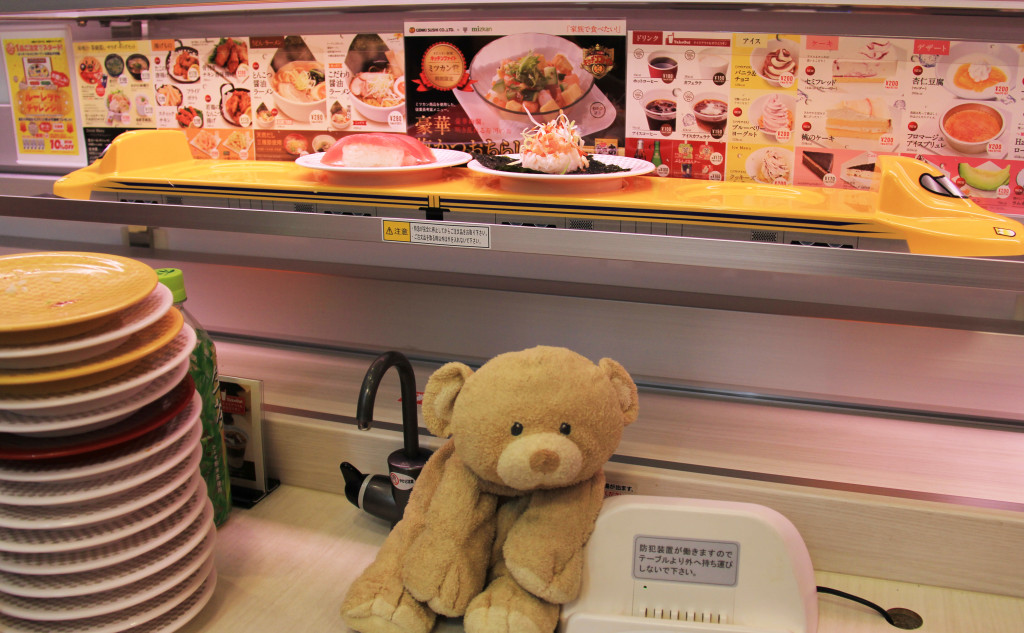
Naena Waterfall
On our first day in Myoko we visited a small waterfall. We spent 15 minutes hiking up to the waterfall (it was more like a walk) and then ate at the restaurant nearby. While the waterfall was beautiful, the best part was the delicious somen (thin, white noodles that are usually served cold) we ate afterward! The restaurant served a special kind of somen called nagashi somen, or “flowing somen”. The noodles run through cold water in an open pipe and into a wooden basket at the table, but you’re supposed to catch the noodles with chopsticks before they fall into your basket. After catching the noodles, you dip them in a light dipping sauce. Somen on a warm summer day is definitely refreshing!
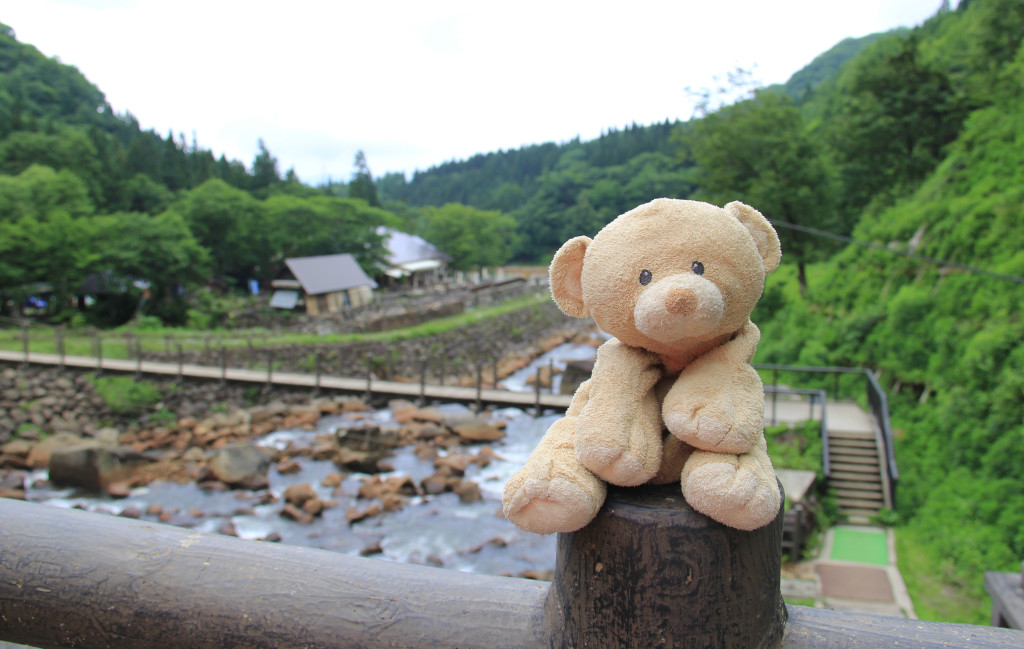


Ogon no Yu
Next stop was a natural onsen, or hot spring. The hot springs was a small one in the middle of a hill that was split into two sections: one for men and one for women. Luckily, we visited Japan in June, when the number of dead bugs in the water is minimal. My mom, Woody, and I braved the smelly, bug-filled waters, but my sisters were too disgusted by the bugs and sulfuric smell. Woody thought the hot water was actually pretty relaxing.

A Park Somewhere in Myoko
There was a lot of pretty nature areas in Myoko: this park, in particular, had a giant pond full of blooming lotus flowers! The pathways were covered in giant, furry caterpillars.
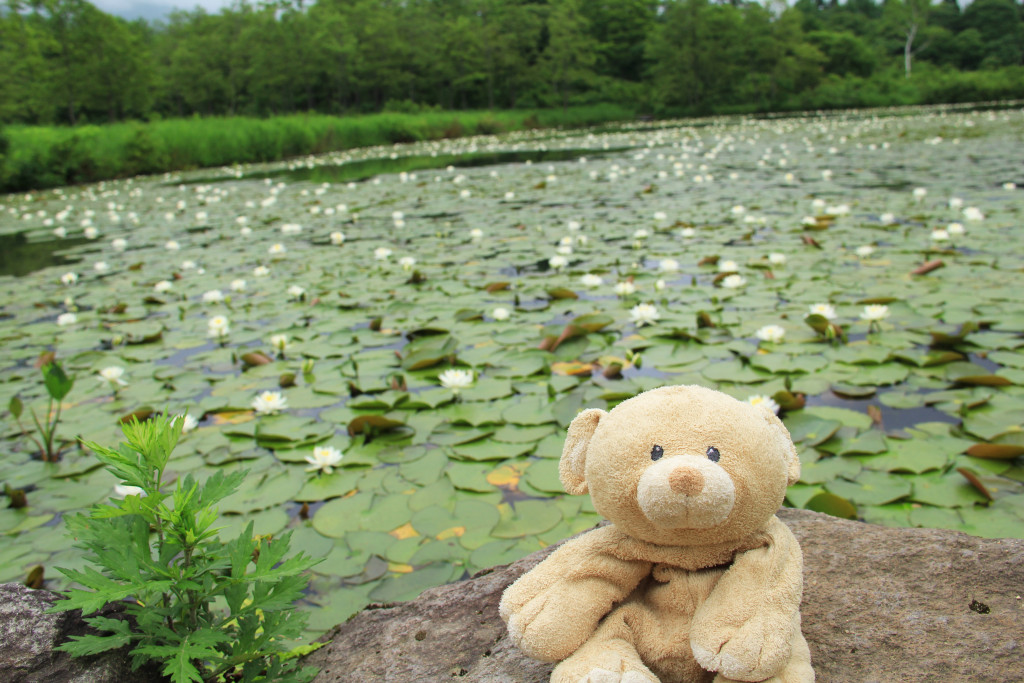
Nozawaonsen
On our last day, we visited Nozawaonsen, an onsen town full of small, free-of-charge bathhouses. The bathhouses had many different kinds of natural water, and most were extremely hot. Interestingly enough, most of the town’s residents use the outside hot springs to cook their vegetables! Plus, nearby shops sell baskets of eggs for tourists to boil their eggs in the specially designated egg-cooking hot springs; we dipped our feet in warm water while we peeled our boiled eggs.

Back to Tokyo
There was lots and lots of driving to get back to Tokyo from Myoko. Woody was sad that it was our last day.

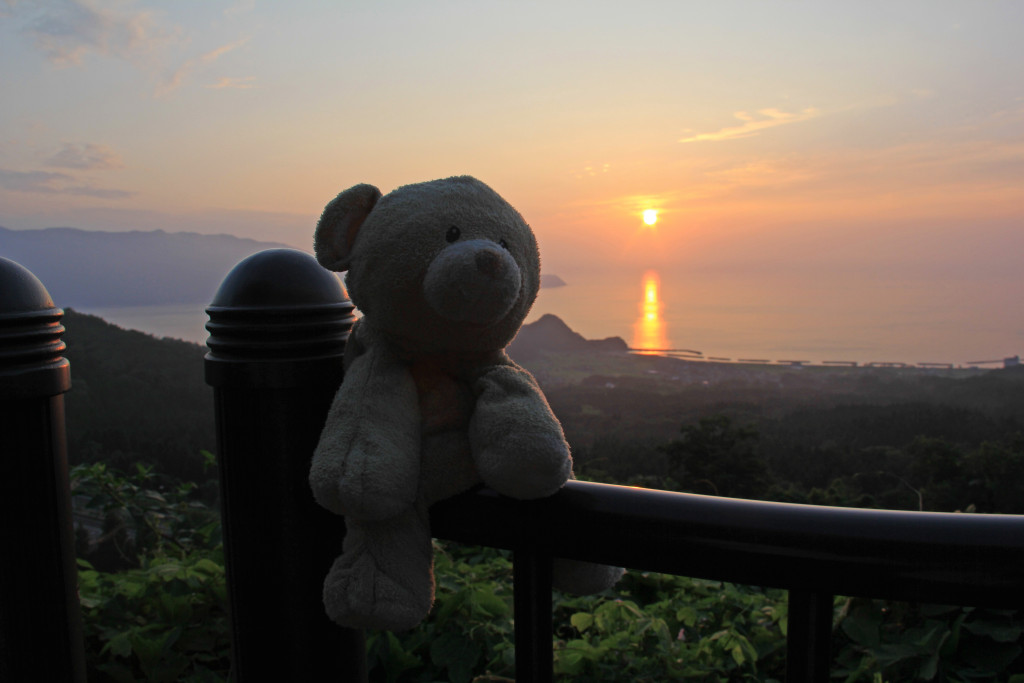
Sadly, this is the last Woody Adventures post of our trip in Asia. I really enjoyed our trip to Japan– we visited tons of amazing places and I was able to take lots of memorable pictures. Plus, my family and I were able to experience Japanese culture and able to try new and different types of food. I definitely hope to come back and visit again. 10/10 stars!
Special thanks to my uncle for being our tour guide/driver and to my dad for taking us on an amazing trip.
To see more pictures of Woody, feel free to follow my instagram @magicallilicorn!

